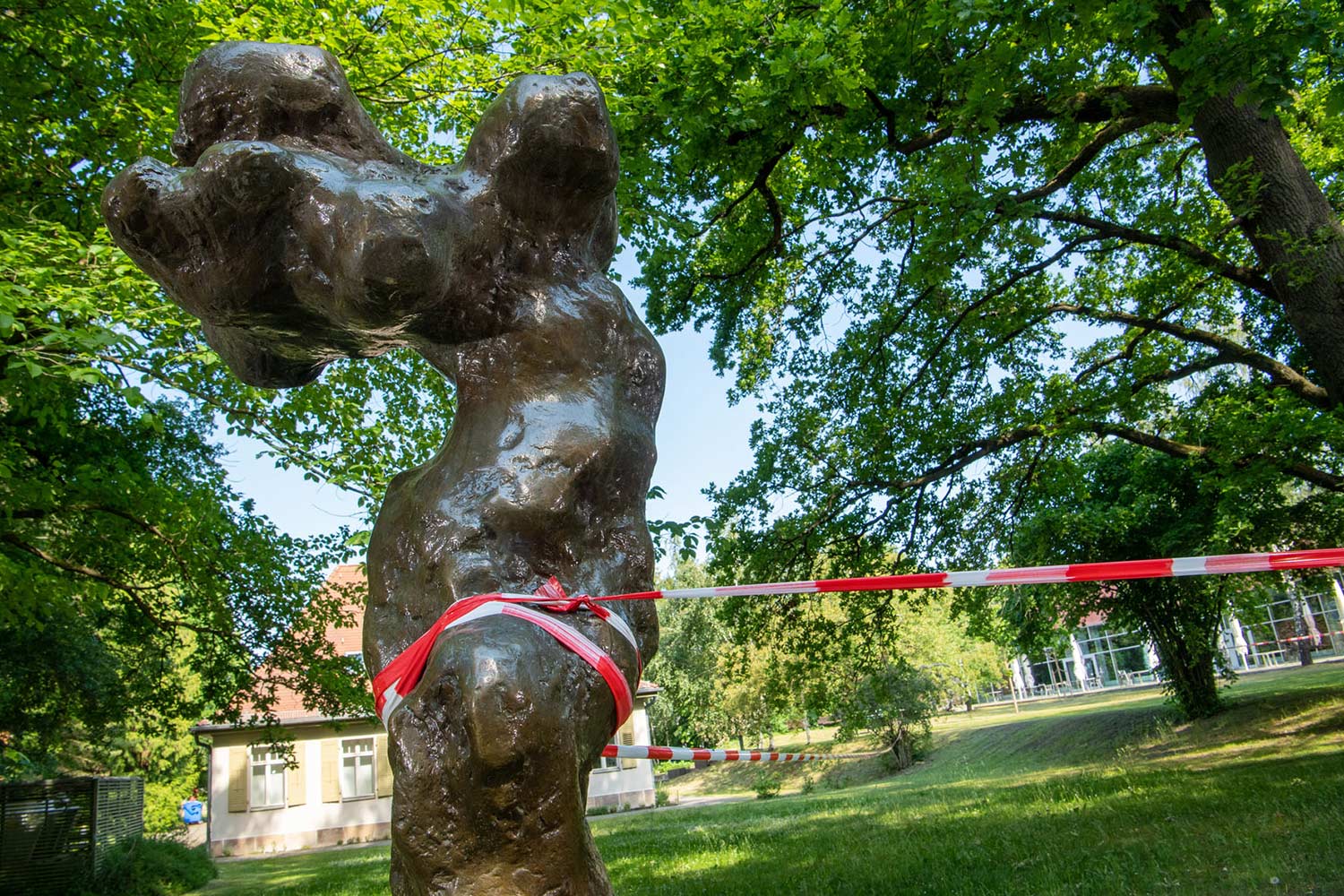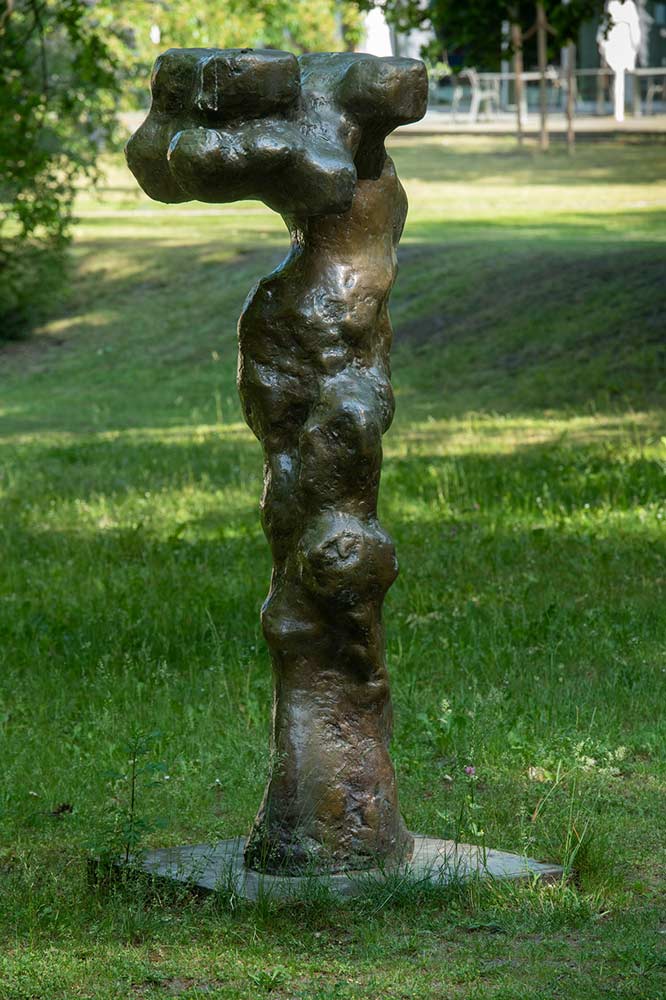11Große Karyatide
Gerson Fehrenbach
1964, Bronze

On the lawn in front of the campus canteen stands the first of two sculptures by Gerson Fehrenbach; here is a bronze sculpture about two meters high, called ”Große Karyatide” (Great Caryatid).
Fehrenbach was born in Villingen in 1932. After completing an apprenticeship as a wood sculptor, he attended the Arts and Crafts School in Bonndorf in the Black Forest, then was a student at the College of Arts in Berlin until 1960. From 1963 to 1980 he held teaching positions at the TU in Berlin. He participated in documenta III in Kassel in 1964 and his works have been on public display in Berlin, Frankfurt (Main), Pfullendorf, Offenburg, Villingen und Schwenningen and other places. He died in 2004 in Berlin.
Fehrenbach was considered an individualist among the German sculptures of the Post-war era. His works are categorized as ”Informel”, a collective term for abstract art styles of this period, whose features include a certain formlessness and spontaneity in the manner of artistic production. Here there are no fixed rules governing the artistic process – instead, as in Surrealism, unconscious processes guide the work.

Fehrenbach‘s principal motif concerned the human figure – standing, sitting, or fallen. The term ”caryatid” comes from classic architecture, where it refers to a structural component of portals and facades. Instead of a column or post, sculptures of women support the structures. Fehrenbach traveled widely, and during his journeys he studied ancient art and carried out careful observations of nature. His studies of the latter included motifs from religion and mythology, woven together in a characteristic visual language. His works often feature knob-like protrusions on horizontal and vertical axes. Here he has modeled a woman‘s body, standing vertically in a way that it merges with the protuberances to form an organically growing, top-heavy figure.